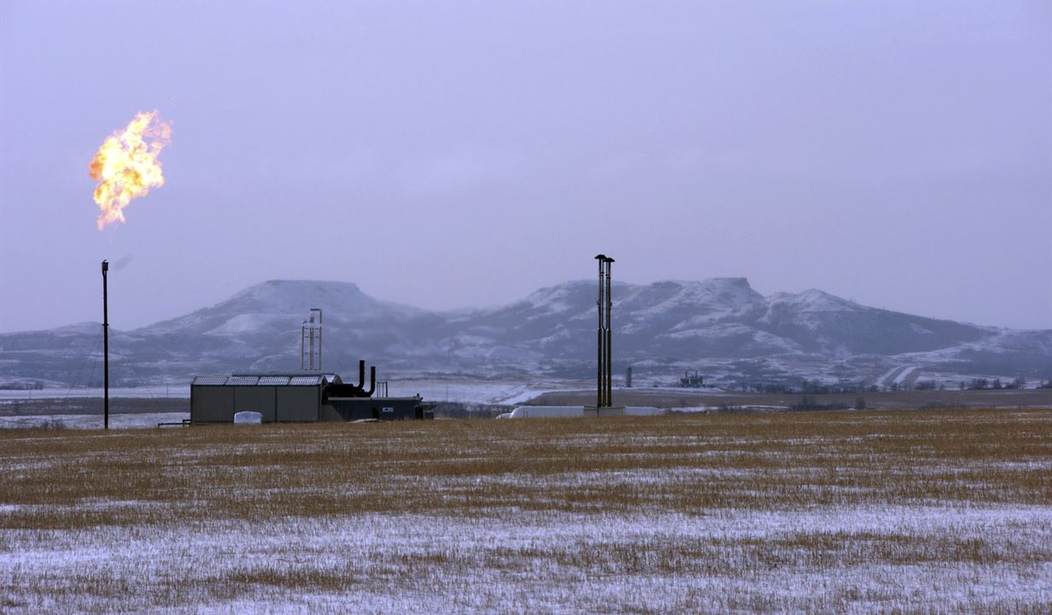Before you jump to the wrong conclusion based on the title, don’t worry. The United States is nowhere near running out of natural gas that is available to be extracted from the ground and put into production. The oil and gas industry has identified more untapped natural gas resources on U.S. soil and off of our coasts than we could possibly use for the next century. But we don’t pipe natural gas from the wells straight to your homes and businesses. The gas is stored in huge underground tanks until it’s ready to be transported to its final distribution locations. Those reservoirs are currently at the lowest levels we’ve seen in years. And you may be pleasantly surprised to learn that according to the U.S. Energy Information Administration (EIA), for once this report has nothing to do with cutting off Russian exports or the war in Ukraine. We just burned so much of it over the winter that we’ve drawn down our supplies dramatically. Why? Because, to the great disappointment of Al Gore, it was far colder than normal in January, so demands on the supply system for both heating and energy generation were through the roof.
Increased heating demand for natural gas this past winter resulted in more withdrawals from U.S. natural gas storage than normal. By the end of March, the least amount of natural gas was held in U.S underground storage in the Lower 48 states since 2019.
In January, temperatures across the country were colder than normal, which increased residential, commercial, and electric power demand for natural gas. More heating demand and record-high liquefied natural gas (LNG) exports resulted in above-average withdrawals from working natural gas storage despite increased natural gas production.
Working natural gas in underground storage facilities in the Lower 48 states totaled 1,387 billion cubic feet (Bcf) as of March 31, 2022.
As noted, the total supplies in American storage facilities at the end of January were 17% lower than the previous five-year average for that time of year. In that one month, we withdrew 991 billion cubic feet of gas from those reserves. That’s the most natural gas we have withdrawn from storage in the month of January since 2012.
There’s really no need to panic, or at least not yet. Natural gas is still being extracted and as the weather improves, demand always drops in the spring, so the tanks should be back to their normal levels in a month or so. We’re nowhere near the “E” on the tank at this point.
But it’s my hope that this report will serve as an important reminder about the realities of our energy grid and how politics shouldn’t be dictating our energy policy. For all the people out there screaming to cancel construction on pipelines and “leave it in the ground,” the answer is always to just use more renewable energy from wind and solar, right? But the reality is that we don’t produce nearly enough renewable energy to take care of our most fundamental needs, particularly in the winter. It’s not even close.
Further, natural gas is the most common form of heating for buildings in the United States. 48% of residential buildings use natural gas and 36% use electric heating. The majority of that electricity is created using – you guessed it – natural gas. All of those buildings in the first category can’t generate heat using electricity even if there was enough juice on the grid. (Unless you want to tell everyone to go buy space heaters.) The infrastructure simply isn’t there and it will take a least a generation to convert all of those structures over to electric heat even if you believe that’s a good idea.
Shutting down our pipelines now and refusing drilling permits is a set of chickens that will come home to roost far more quickly than you might imagine. We saw an example of that in January, though we thankfully didn’t bottom out. When you preach to us about renewables, you are literally playing with people’s ability to survive the winter. The wind doesn’t automatically blow any harder in the winter just because you need more juice. The sun doesn’t shine any more brightly. In fact, it generally does the opposite. These anti-carbon policies that are being pushed are not backed up by science. And if you want to see people stampeding away from your green energy policies as fast as possible, just tell them they won’t be able to heat their homes next winter. (Assuming they survive long enough to come after you with pitchforks and torches.)








Join the conversation as a VIP Member